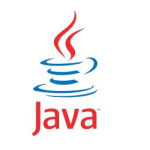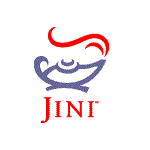 |
General Trends
At the heart of the internet are a set of protocols which allow data to flow between networks in a safe and reliable way. These protocols are very robust. They provide a very strong foundation for the new technologies that are being built on top of them. The result is a safe and reliable virtual environment with new capabilities being added every day. Taken together, these new capabilities are likely to change professional practice in some fundamental ways. The fact is, the potential impact of the internet on architectural practice is impossible to overstate. Here are the internet related trends that we think will have the biggest impact on professional practice in the coming decade.
- Use of the internet will continue to grow exponentially.
- Expect to see the introduction of advanced protocols that help speed the distribution of data around the internet. Note the emergence of Internet 2.0.
- The Internet’s infrastructure can be expected to continuously improve (i.e. more bandwidth and higher transmission speeds). The transmission cost per megabyte of data will decline.
- Many methods of connecting to the internet emerge. (i.e. access via cable modem, Digital Subscriber Lines (DSL), traditional telephone dial-up, optical fiber; radio satellite and wireless telephone)
- Expect to see significant improvements to web server software (see item on open source software development). We can also expect to see improved web site monitoring and management tools come to market.
- Expect to see new web based graphics file formats that offer superior file compression capabilities. In addition, expect to see improved web graphics tools come to market.
- Note the increased use of multimedia on the Internet.
- The AEC industry will increasingly rely on web technology to support all manner of business related activities. For example, the Internet will be used by project teams to control the distribution of engineering data and design documents. In addition, it will also be used by the office staff to support routine administrative tasks. It will also be used as a marketing tool to publicize a company’s capabilities.
- Virtual Private Networks (VPN’s) will supplant the use of WAN’s to communicate with remote offices or geographically dispersed project team members.
|
 |
Web Software
- Note the continued proliferation of web editing tools. Mergers and consolidations within this segment of the computer industry are to be expected. We should also expect the web editing capabilities of Microsoft Office products to be significantly improved. Expect Microsoft to continue to create nonstandard extensions of HTML.
- Use of the Java programming language significantly increases. Many PC based software applications are currently being rewritten so they work over the internet (i.e. turned into Java applets). Note the immanent commercial introduction of Java based CAD and rendering tools as well as word processing, desktop publishing and office suite products. Popular software packages will slowly migrate to the Internet and become available on a per use basis.
- Increased use of Java applets will reduce dependence on traditional operating systems. Java will increasingly be used in embedded computers and “smart” data appliances, mobile devices or PDA’s in place of traditional operating systems.
- Market forces may cause Java to split into 3 or more dialects. Dialect proliferation diminishes the importance of the current Virtual JAVA Machine standard. As a result, the paradigm of “write once and run anywhere” could soon become “write once and debug many times”. Getting JAVA code to run on every computer will not be as easy as originally envisioned. Expect increased pressure on SUN Micro Systems to relinquish proprietary control of the JAVA language to an industry standards organization.
- Note the commercial introduction of “free” internet (Java) based office productivity software (i.e. word processors, spreadsheets, databases etc.). In an effort to break Microsoft’s hold on desktop operating systems, Sun Microsystems has introduced a suite of office productivity tools that work on any computer that has internet access. Corel has also introduced a similar line of Word Perfect software. Architects and engineers can benefit from this development in several ways. First, we could reduce our yearly software expenses. The AEC industry stands to save thousands of dollars if we are no longer required to purchasing future upgrades or additional software licenses for Microsoft Office. Second, we can reduce the hard disk size of all future PC’s and laptops. Over time this will save the AEC industry millions of dollars. Third, employees can access the latest edition of the software from remote locations. Forth, we can reallocate the time that our IT staff normally spends installing and maintaining Microsoft Office. Lastly, we can eliminate much of the time that is normally spent teaching the staff how to operate the same software on different types of computers. Because this new software looks and acts the same from platform to platform, training costs and learning curves will be significantly reduced.
- Hypertext languages will continue to develop and improve. As hypertext languages mature, document sharing and collaborative work will become easier and more commonplace. Virtual work groups located on the Internet will become the commonplace. More robust document management capabilities will be built into future hypertext language versions. Advanced hypertext languages will be capable of incorporating many different types of digital media into compound documents (i.e. digital animations, videos, audio, text and 3-D models). It will also be capable of tracking the revision history of each component document.
- Improvements in data search techniques will trickle down to the desktop. Hypertext languages can be expected to support advanced search and cataloging capabilities. Since most documents will be hypertext based, these advanced search features will enable individual users to gain quicker access to ever increasing volumes of data. (see data smog and data mining). Artificial intelligence techniques will also hasten and facilitate more thorough database searches.
|
 |
Peer-To-Peer Internet
Note the emergence of Peer-To-Peer file sharing schemes over the internet. This is a major change from the current prevailing Client-Server model of file sharing. Note the popularity of Napster and Gnutella’s peer-to-peer file sharing software which has made music pirating commonplace. The worldwide media attention that has focused on the new software’s ability to make pirating easy has obscured the underlying technical breakthrough that is inherent in the software. It may make centralized project ftp sites obsolete. Imagine having all the files associated with a project resident on the internet server of the company or team member who created the file. Imagine giving every member of a project team access to every file or drawing created for that project without having to go to a central repository. The sole function of the “executive architect’s” internet server would be to keep a drawing archive database current. The only role of the central database would be to track the revision history of files as well as their current location. Interested parties could access and copy just the files they wanted from just the team members they needed to contact. This would cut down network traffic significantly.
|
 |
Portal Building
Web sites devoted to the AEC industry are proliferating rapidly. Most AEC related web sites are designed to generate revenue through advertising or transaction fees. To make this business model work, they aim to attract as wide an audience as possible. A good way to attract a large audience is to offer unique and potentially valuable information on their web site.
|
 |
Automated Construction Sites & On-line Construction Data
Info appliances coupled with extranets and cell phone technology will allow builders, contractors and facilities maintenance operations to be in continuous touch with centralized tracking and control systems over the entire life cycle of a building. Contractors and their subs will be able to gather information remotely (i.e. through mobile computers) and share that information with the rest of the project team. Architects and engineers should expect many more requests for information if technology removes the barriers to communication.
|
 |
Web Based Collaborative Design Tools
Project web sites are becoming increasingly popular throughout the AEC industry. There is currently a spate of project extranet software packages on the market. Many have been tailored to meet the needs of the AEC industry. At the moment, no one piece of software has emerged as the market leader or the industry standard. Most software developers are trying to differentiate their products from their competitor’s by optimizing a few key capabilities. No single product currently contains all the features that might otherwise make it an industry standard. It is likely that market forces will help consolidate and optimize the field. In the absence of a single “Swiss army knife” product that does everything we might expect a project extranet to do.
In the absence of an industry standard or market leader, it is likely that many A&E firms will build project extranets from a group of proven, stand alone components like email, document management software and web server software. Such a strategy will allow each software component to be optimized or replaced independently of all others.
Project websites may give rise to franchised professional practices. With the help of web technology, many small practitioners could, in theory, be tied together to form a effective nationwide company. Web technology may also force professional practice to become more international. Advanced communications technology will allow firms to ship “production” to the third world countries.
|
 |
Jini Networks
Sun Microsystems Inc. is developing new networking software called Jini that allows any computing device to easily connect to a computer network, with potentially wide-reaching implications. When fully developed, Jini will let any computing device (including cellular phones, pagers, laptops and even home appliances) to connect to any computer network very easily. Jini uses Sun’s Java programming language. In theory, programs written in Java can be written once and run on many different types of computers. Jini technology relies on a small amount of Java code to create a ”federation” of Java virtual machines systems which emulate the Java programming environment on the network. People, devices, data, and applications connected to the network are dynamically connected to share information and perform tasks.
Jini networks hold the promise of extending true plug and play capability to local area networks. No configuration will be necessary. Prototype peer to peer networks have already been tested. Full blown networks have yet to be demonstrated. Every digital device capable of connecting to a network will have a Java device driver embedded within it. will be embedded within each network able device.
|
 |
Pay-As-You-Go Internet
Advanced transmission technologies and data protocols will allow a new Internet business model to emerge. Increased bandwidth coupled with the ability to prioritize data will allow entrepreneurs to charge fees based on the type and speed of the data transmitted. Concurrently, we can also expect to see the globalization of on-line payment systems.
Reference: Based on an article in PC Week by Pankaj Chowdhry entitled Networks of Tomorrow (dated January 3, 2000)
|
 |
XML (eXtensible Markup Language)
- XML attaches an identification tag to every piece of data in a database. Each tag contains rules that defines what the data is, how the data can be used (i.e. security info) and how the data is linked to other information. These tags allow XML savvy software to share data very efficiently. For instance, information sent from a web site can be understood and reused by XML enabled software on the recipient’s website.
- Experts estimate that it will take about 5 years for XML to gain widespread acceptance.
- The XML programming language has been around for about 5 years. There are currently several competing versions of the language in use. No one version dominates the market. Because the language has been around for some time, XML software programs are common. Unfortunately, many of these software applications only run on specific versions of XML. If a common standard were to be adopted, the market for XML software would grow substantially.
- XML will allow computers to share information without manual intervention. As a consequence, on-line communication could be dramatically streamlined. For example, it’s quite common for suppliers, manufacturers, distributors and customers to share product information. Imagine an XML document that contained chunks of data that were identified as “Product Numbers”. Software that was capable of understanding XML data could read these “Product Numbers” and make use of them in any number of different ways (i.e. catalogs, price lists, etc).
- We can expect to see future versions of XML to run on wireless devices. This will allow web page designers to use a single programming language for many different types of browsers. It will also allow software developers to write programs that work on cell phones and hand held devices (PDA’s) as well as desktop computers (i.e. write once, use anywhere). Adoption of cell phone savvy XML standards will allow web enabled handheld devices to become more popular.
- Expect to see XML savvy CAD software become very popular. It is common practice for every squiggle in a CAD drawing to have a unique identifier (i.e. a part number). Since XML tags function in part as unique identifiers, it’s easy to see that XML tags would be very useful in a CAD drawing.
References: “When Machines Chat” Business Week, July 23, 2001
|
 |
Microsoft’s .Net Initiative
Microsoft has recently begun to market its .Net suite of software products. Currently, the .Net product line only includes a few software titles. Eventually however, the .Net suite will include almost all of Microsoft’s current product line.
Computers are now capable of conversing with one another without much human intervention. This is an especially useful capability and it becomes all the more important when it’s used on the internet. Microsoft’s .Net software allows all sorts of private information to follow a user around the globe once their identity has been verified. Building a highly reliable security scheme is the key to the internet’s continued evolution and growth. Once computers are routinely trusted to exchange very private information, all manor of highly personalized computer services can be designed and delivered automatically. Microsoft is thus positioning itself to take full advantage of the internet’s expected future growth.
Microsoft’s new initiative accomplishes several things simultaneously. First, it allows Microsoft to grow its business. By increasing their product’s interoperability, Microsoft is attempting to merge all of its different markets into one grand computing environment. This is a refinement on it’s time tested strategy of bundling products together so they are feature rich (i.e. leveraging their products). The resulting software often compares well to competing products. As a result, Microsoft has been able to attract more and more customers.
Second, it counters Sun Microsystems’ Jini initiative. The Jini environment allows different types of computers to communicate with one another very efficiently. In effect, Jini acts as a mock operating system. This capability poses a direct threat to Microsoft’s continued dominance of the desktop and server operating system market.
|